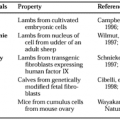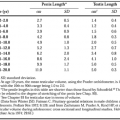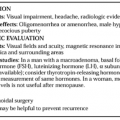RECEPTORS OF THE CALCITONIN GENE FAMILY OF PEPTIDES
The peptides of the CT-gene family exert their bioeffects through binding to characteristic receptors with seven transmembrane hydrophobic domains. The receptors belong to the G protein–coupled receptors, in which the guanidine nucleotide guanosine triphosphate mediates receptor function by binding to specific mediator proteins.5 The receptors are categorized
into two major subgroups, CT receptors (CRs) and CT receptor–like receptors (CRLRs). The different members of the CT family of peptides bind with different affinity to CRs and to CRLRs.5 Therefore, their bioeffects are in part overlapping.
into two major subgroups, CT receptors (CRs) and CT receptor–like receptors (CRLRs). The different members of the CT family of peptides bind with different affinity to CRs and to CRLRs.5 Therefore, their bioeffects are in part overlapping.
CALCITONIN RECEPTORS
Several isoforms of the CR are found. They are derived from a single gene by alternative splicing of mRNA, which results in variable amino-acid sequence, length, and functional properties of the receptor domains.102 The CRs consist of a single glycosy-lated polypeptide of 70 to 90 kDa, equivalent to 450 to 500 amino acids. CRs are related to receptors of parathyroid hormone and parathyroid hormone–related protein, secretin, vasoactive intestinal peptide, pituitary adenylate cyclase–activating peptide, growth hormone–releasing hormone, glucagon-like peptide-1, and glucagon. This suggests that these receptors may comprise a distinct subfamily of G protein–coupled receptors.103
The CRs are widely distributed and are particularly numerous in osteoclasts of the bone, in cells of the distal nephron of the kidney, and in the central nervous system.104 CRs are also expressed in preimplantation embryos in mice. As mentioned earlier, CT is thought to be involved in blastocyst differentiation and implantation. Human T lymphocytes have high–affinity CRs on their surfaces. Thus, the markedly increased CTpr levels seen in infection and sepsis might be immunoregulatory.105
Stay updated, free articles. Join our Telegram channel

Full access? Get Clinical Tree






